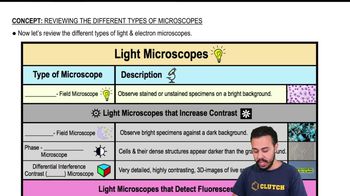Here are the essential concepts you must grasp in order to answer the question correctly.
Precipitation
Precipitation is a process in immunology where soluble antigens react with soluble antibodies to form insoluble complexes that precipitate out of solution. This reaction typically occurs in a liquid medium and is used to detect the presence of specific antigens or antibodies. Precipitation is often utilized in laboratory techniques such as immunodiffusion and is characterized by the formation of visible aggregates.
Agglutination
Agglutination refers to the clumping of particles, such as cells or bacteria, in the presence of specific antibodies. This process occurs when antibodies bind to antigens on the surface of cells, causing them to stick together and form larger aggregates. Agglutination is commonly used in blood typing and various diagnostic tests, providing a visual indication of the presence of specific antigens or antibodies.
Recommended video:
Outcomes of Antibody Binding to Antigen
Differences in Mechanism
The primary difference between precipitation and agglutination lies in the nature of the antigens involved and the resulting complexes. Precipitation involves soluble antigens and antibodies forming insoluble complexes, while agglutination involves particulate antigens (like cells) clumping together due to antibody binding. This distinction is crucial for understanding their respective applications in immunological assays and diagnostics.
Recommended video:
Reviewing the Different Types of Microscopes
 Verified step by step guidance
Verified step by step guidance

